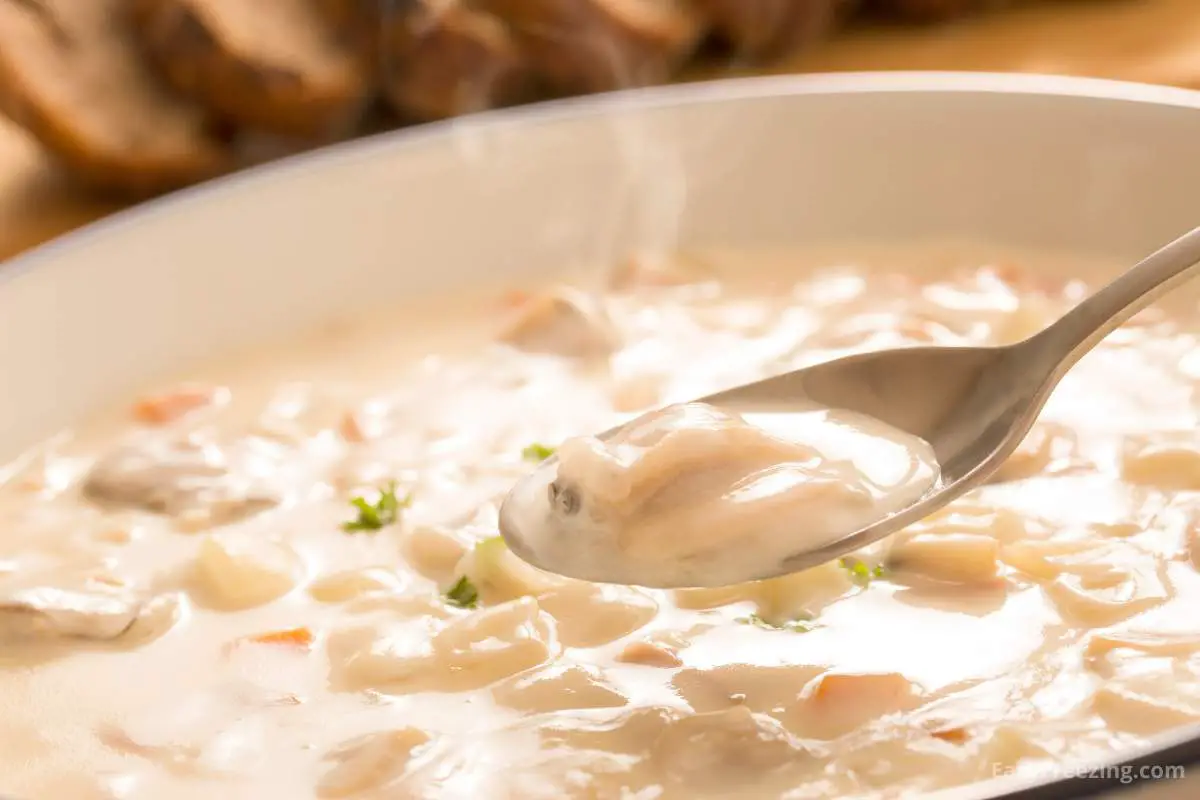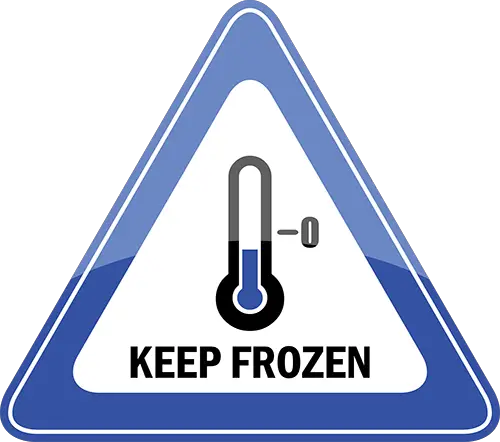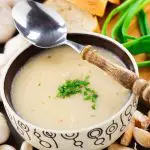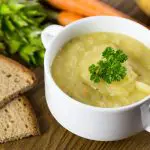Freezing Chowder In The Best Way Possible (Revealed)
Chowder is appreciated worldwide and can be prepared in many different ways. While chowder is best eaten fresh, many people make a large batch and enjoy it for weeks. In this case, freezing becomes a necessity. However, like most soups, chowder is a bit tricky to freeze.
In this article, I’ll go through the most popular types of chowder and how to freeze them properly to maintain their best quality.

Can You Freeze All Kinds of Chowder?
Chowder can be prepared using various ingredients such as fish, clams, vegetables, dairy products, and spices. Some of these ingredients are more delicate than others and may not freeze well, especially heavy cream, milk, potatoes, and certain spices.
Frozen chowders that are heavy on dairy tend to thaw with a grainy texture. In addition, dairy ingredients have a tendency to separate when frozen.
That being said, you can generally maintain much of the chowder’s quality if you freeze it properly, but it is recommended to avoid freezing chowder that contains delicate ingredients that don’t freeze well.
Let’s take a look at the ingredients of some of the most popular chowders, and then we’ll talk about the steps to take to freeze specific types of chowder.

What Are The Different Types of Chowder?
Today, chowder comes in many forms. Below are some of the most popular ones.
Manhattan Clam Chowder
Compared to the original chowder, Manhattan clam chowder contains neither milk nor cream. It is tomato-based, although it does contain a few other vegetables, mainly carrots and celery. It is thought that Manhattan clam chowder was brought to the New World by Portuguese fishermen known for their tomato-based sauces and dishes.
New England Clam Chowder
It is sometimes known as Boston clam chowder. Contrary to Manhattan clam chowder, New England Clam chowder is milk and cream-based. It is typically made with potatoes, onions, salt pork, and chopped clams. It is usually thicker than most other chowder variations.
Rhode Island Clam Chowder
Just like Manhattan clam chowder, Rhode Island Clam Chowder does not contain dairy products, though it doesn’t contain tomatoes. It is typically prepared using clear broth.
Fish Chowder
Seafood and fish chowder are among the most popular. Fish chowder is often made with cod and salmon, accompanied by several vegetables such as potato, celery, carrot, and onions. Most seafood variations are cream-based, with shrimp being the most common main ingredient.
Corn Chowder
Instead of clams or seafood, corn can be used as the main ingredient.
How To Freeze Chowders Without Dairy
If you’re freezing one of the chowder recipes above that doesn’t contain dairy, you’ll find that the process is fairly easy.
Simply allow the chowder to cool completely and place it into a freezer-safe bag or container. You’ll want to make sure to push out any air in the bag before sealing it.
If you’re non-dairy chowder recipe contains celery or other delicate ingredients, it will be a good idea to either limit or remove these ingredients entirely. You can then successfully freeze the chowder base and add in the delicate ingredients (like celery, potatoes, or clams) fresh once you’re ready to thaw and reheat the chowder.
How To Freeze Clam Chowder (& Other Chowders With Dairy)

Can You Freeze Clam Chowder?
Freezing chowder, especially clam chowder, is usually not recommended. It contains many delicate ingredients that don’t freeze well. However, with the right method, you can maintain much of the flavor and texture of fresh clam chowder.
The main ingredients of dairy and clams, in particular, are not very freezer-friendly. Although clam chowder is best enjoyed hot and fresh, it is possible to freeze it.
If you’re planning to freeze clam chowder, it is recommended that you do away with some ingredients that don’t freeze well. These are mainly heavy cream and vegetables such as celery and potatoes. You can add some of these during reheating, especially potatoes and cream. Of course, this is only applicable to homemade clam chowder.
Alternatively, you can half-cook vegetables such as potatoes and celery and freeze them separately. This way, you’ll be able to maintain the thickness and texture when you reheat it.
Dairy products such as milk and heavy cream contribute significantly to clam chowder’s unique, rich taste. Sadly, they don’t freeze well and become rancid in the freezer, affecting the flavor during reheating and thawing.
To overcome this, it is recommended to either skip them or add them fresh when you reheat the chowder to restore some of the texture.
Clam Chowder Freezing Process
Freezing chowder, particularly clam chowder, should be done very carefully.
To freeze clam chowder in the best possible way, you need to start by cooling it first. Don’t wait to start the cooling process until after you’re done eating. Instead, empty the portion you’d like to freeze in a large bowl and let it sit and begin cooling while you’re eating your fresh chowder.
To quicken the process, you can let the bowl sit in the fridge after it’s cooled off a bit on its own.
You can then divide the clam chowder into portions and place them in freezer-safe containers. Next, label each container and place them in the freezer.
How To Defrost Frozen Clam Chowder?
Since it is usually made with cream and other dairy products, you should never thaw clam chowder at room temperature. Instead, place it in the refrigerator and let it slowly defrost overnight.
Once completely thawed, remove one of the freezer bags or containers and put it in a bowl, pan, or soup pot. To preserve the texture as much as possible, stir the mix while cooking it at medium or medium-high heat.
If you’re in a hurry, you can quickly defrost your clam chowder by placing it in cool water.
Can You Freeze Fish Chowder?
You can freeze fish chowder more easily than clam chowder. However, fish chowder doesn’t freeze extremely well either, so you need to be careful. Just like clam chowder, it needs to cool completely before you freeze fish chowder.
Divide the fish chowder into portions and place each portion in a freezer-safe container, then in the freezer. If you use freezer bags, make sure they are tightly sealed.
As you would do with frozen clam chowder, defrost your fish chowder overnight in the fridge before cooking. Never let fish chowder sit at room temperature for a long time. Reheating must be slow and thorough because fish can develop harmful bacteria at room temperature.
How Long Can Frozen Chowder Last?
Assuming they’re frozen at a low and constant temperature, both frozen chowder can last in the freezer for up to six months. However, it’s advised to eat it within three months as the texture and flavor can change significantly.
Can You Refreeze Frozen Clam Chowder?
Any frozen soup already loses some of its texture during the freezing process. It is highly recommended that you don’t refreeze your clam chowder, or any chowder for that matter, as the texture is likely to be completely altered.
Instead of freezing your chowder in a single big batch, you should divide it into portions and only take out the portion you’ll be using.
Freezing Chowder – Final Thoughts
Freezing chowder is no easy task, given that the delicate ingredients found within do not freeze well. It’s always best to eat fresh chowder. However, if handled properly, you can maintain much of its quality and texture. Under the right conditions, you should be able to enjoy it for a couple of months.


